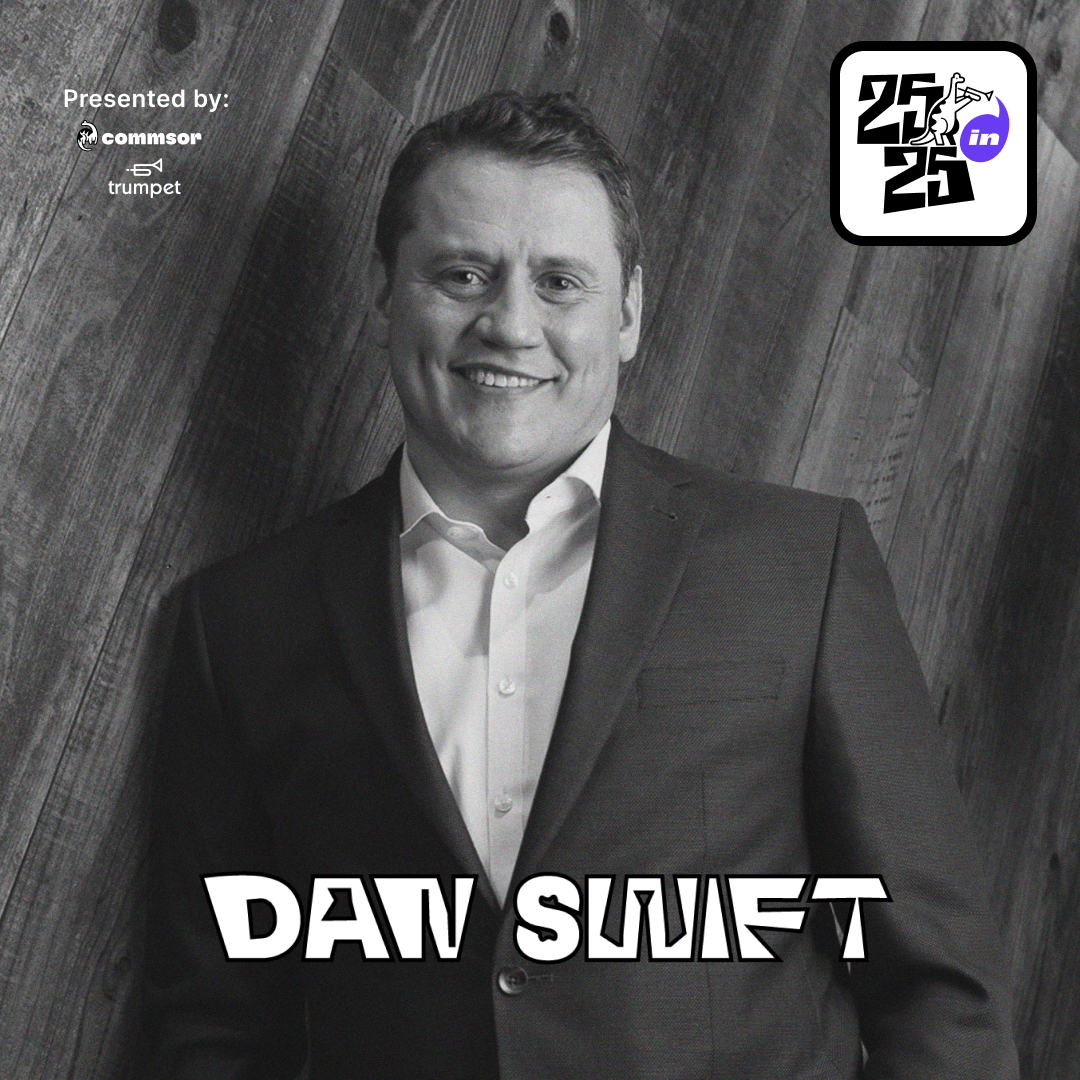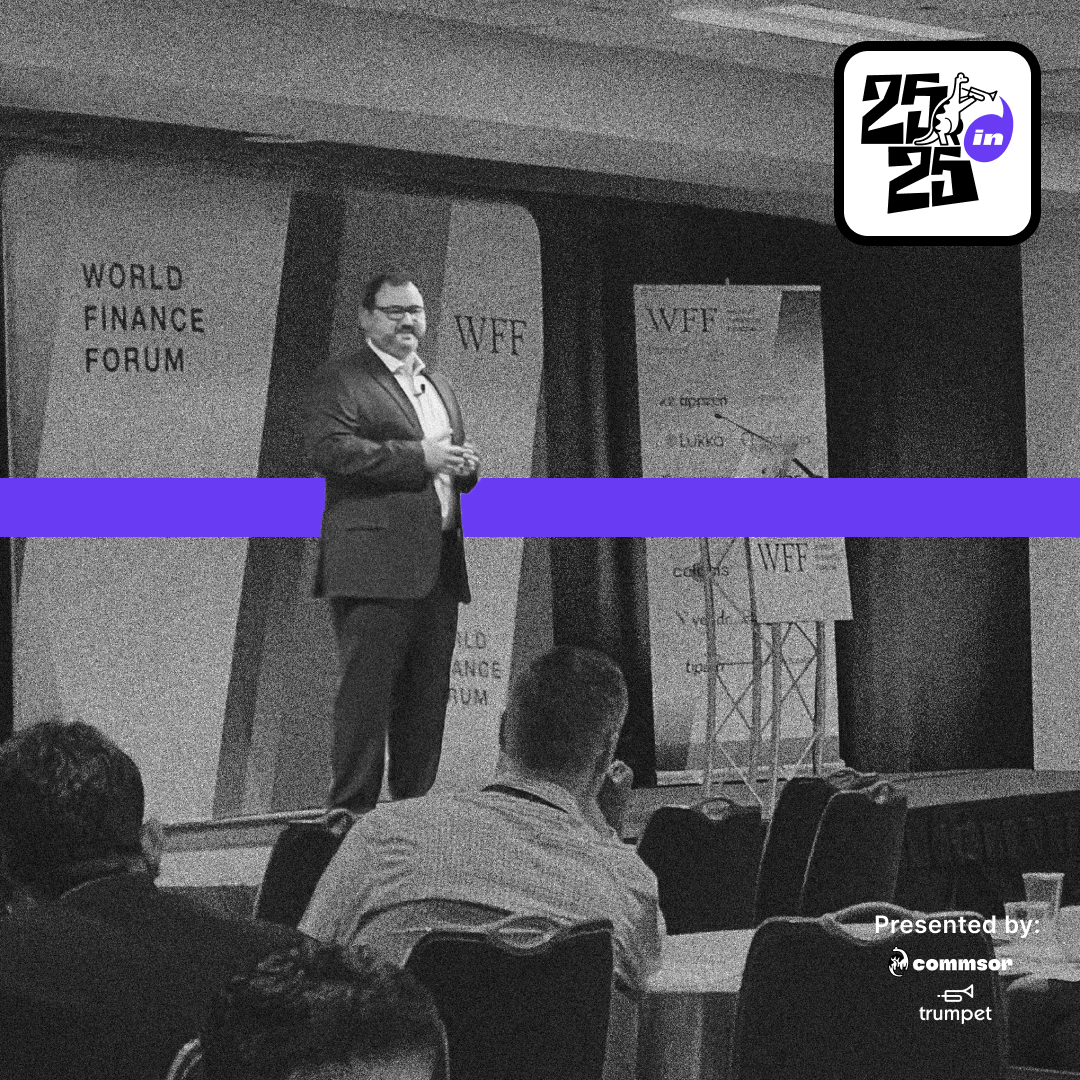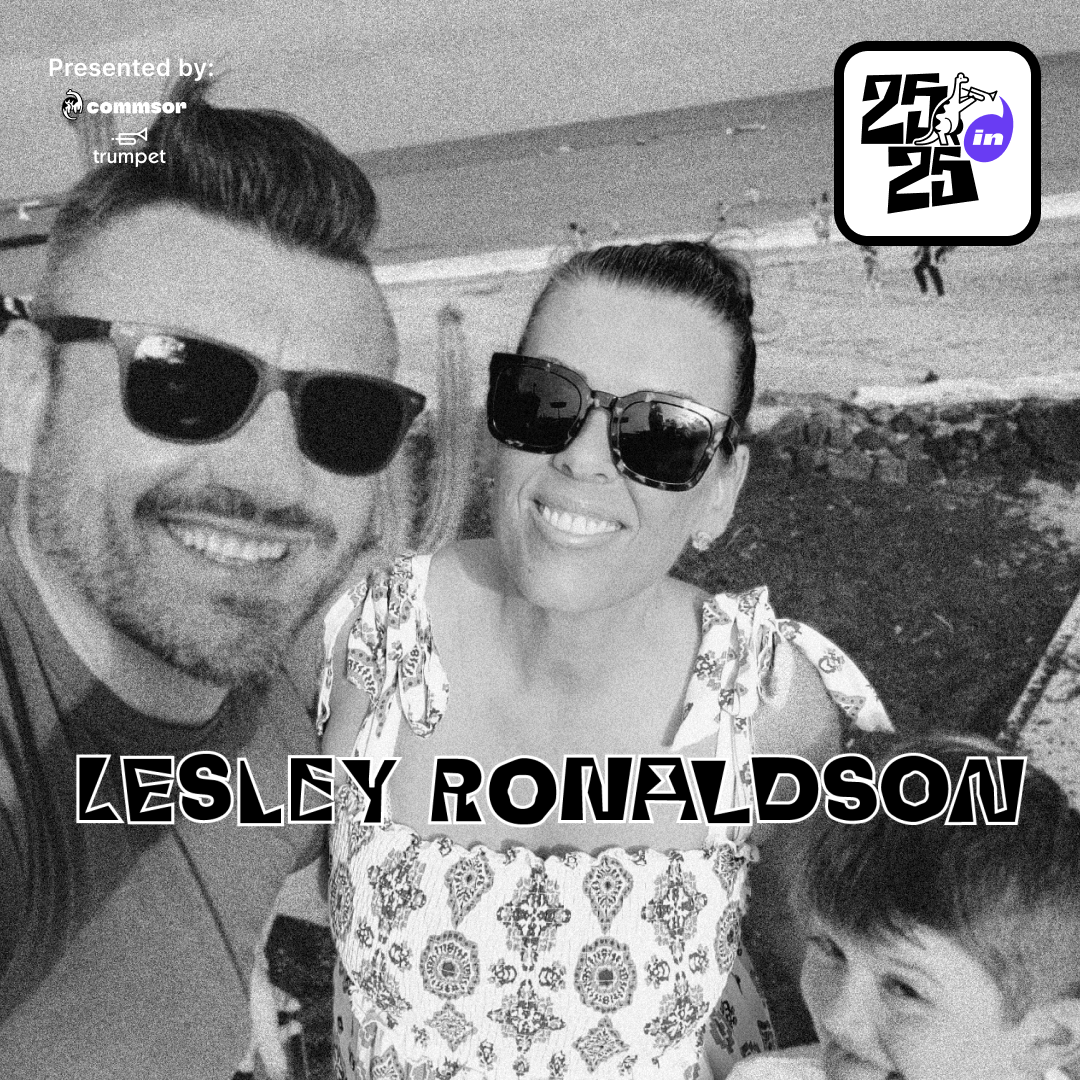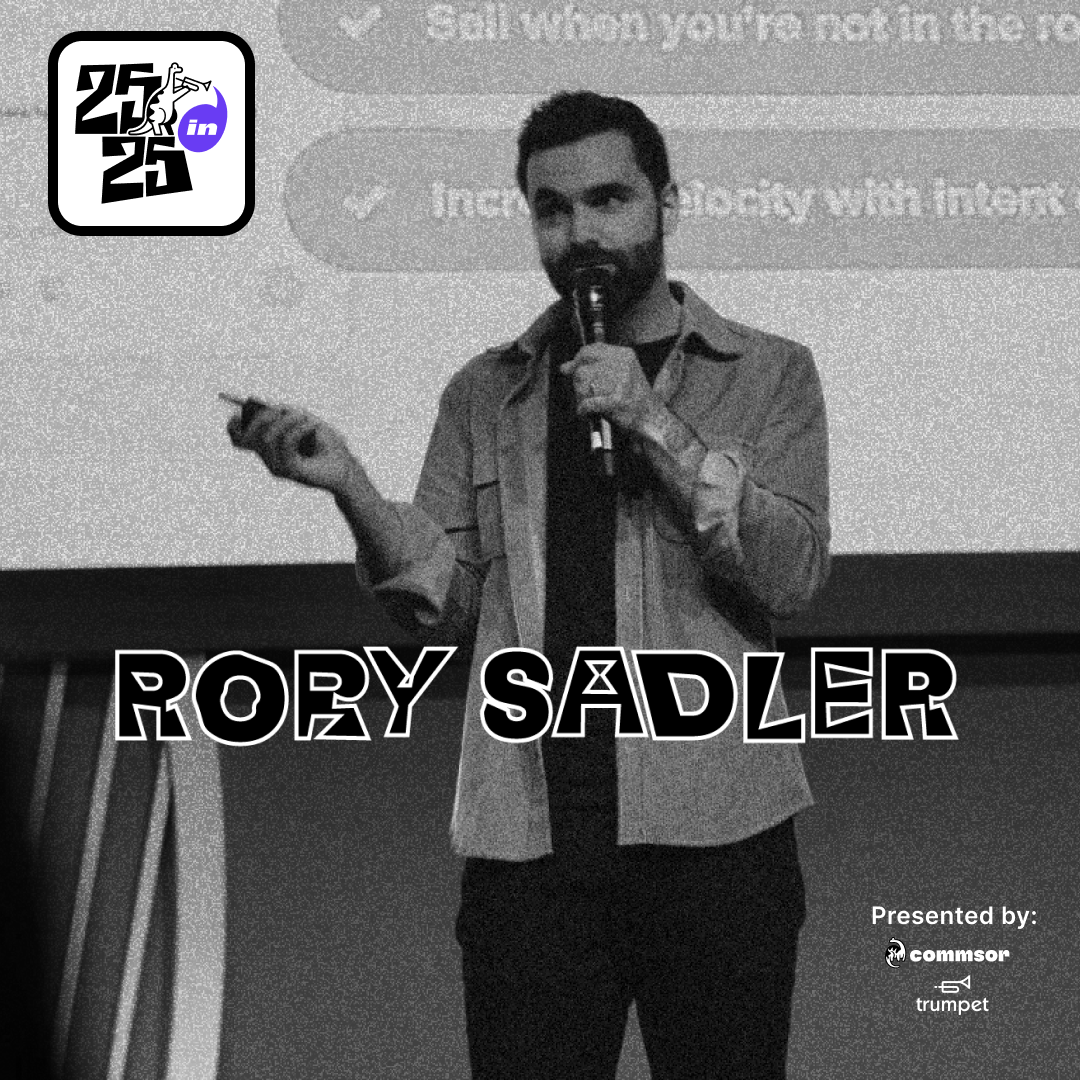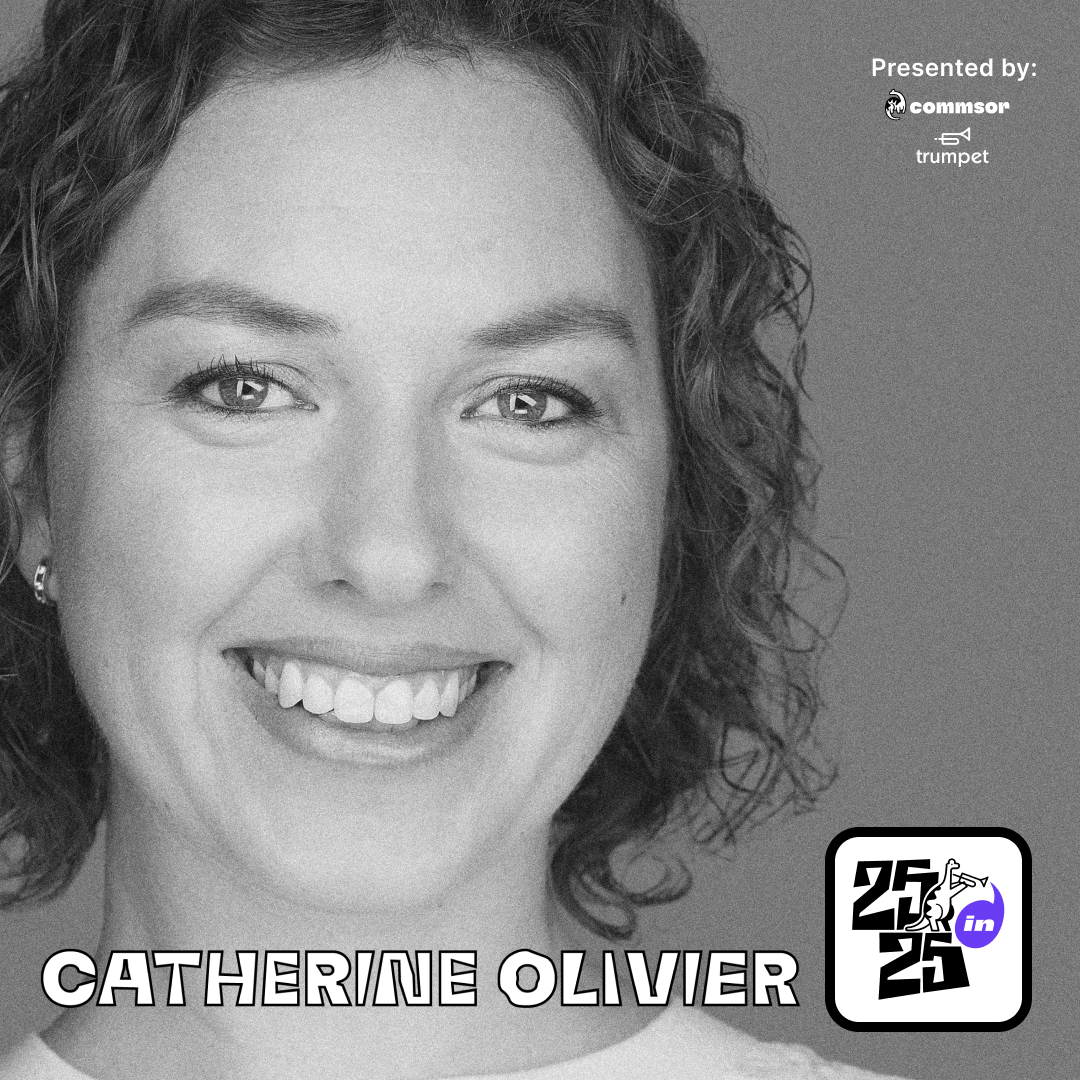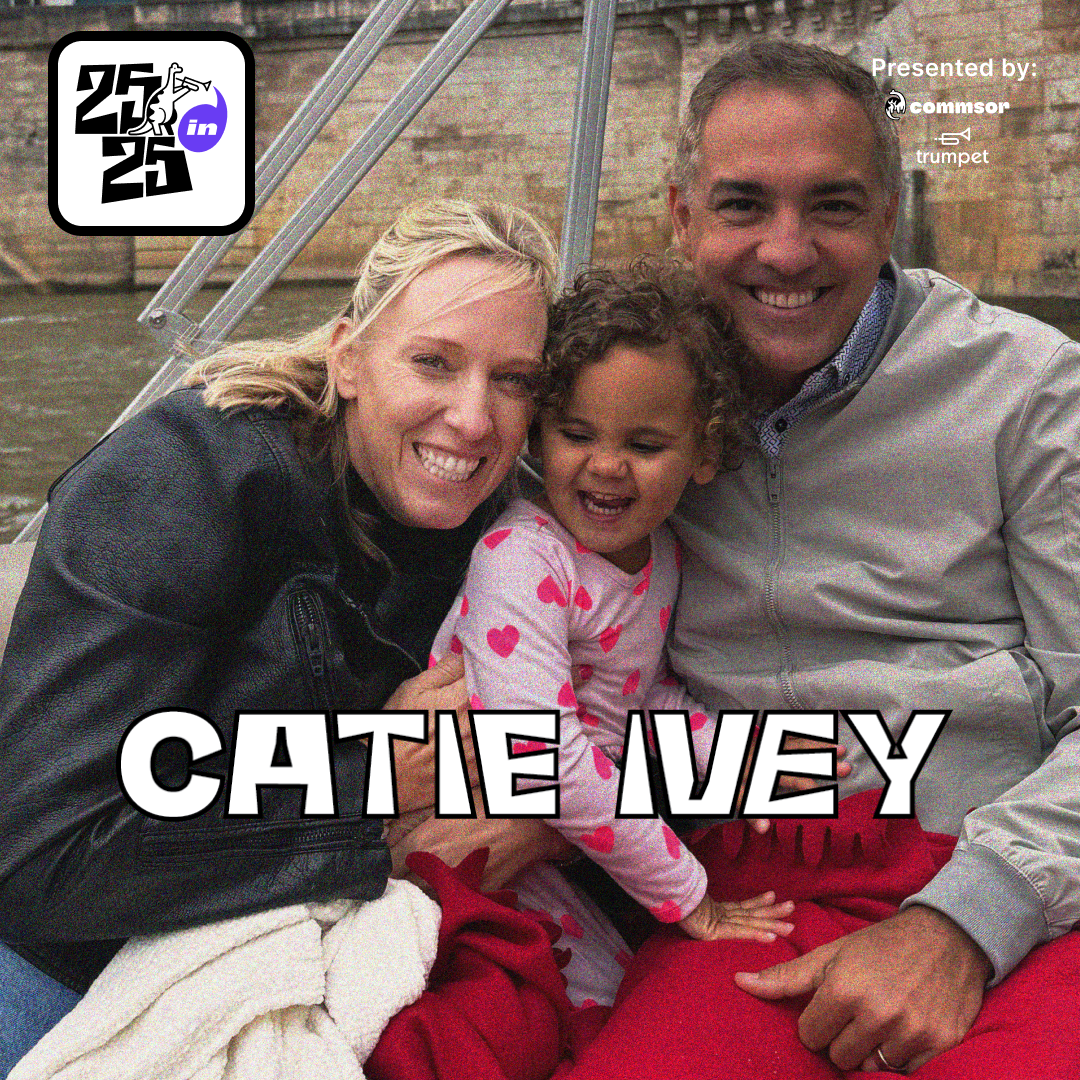Not feeling like reading? We made a video version! ⬆️
Tip #1: Top-of-mind, not top-of-spam
by Dom Odoguardi
Don’t just follow up, follow through with value. From first touch to final signature, your prospect should consistently see your name and associate it with something useful or delightful.This isn’t just about email cadences. It’s about showing up where they are:DM them a meme or article relevant to their industry.
Post regularly on LinkedIn to stay top of mind with thought leadership or behind-the-scenes content.Send a handwritten note or useful book, not a gift card or generic swag.
Comment thoughtfully on their posts. Engage with their world, not just your pipeline.Every touchpoint should feel like a reminder you’re on their side, not a push to buy. Done right, you’ll build trust, familiarity, and momentum, all without being salesy.
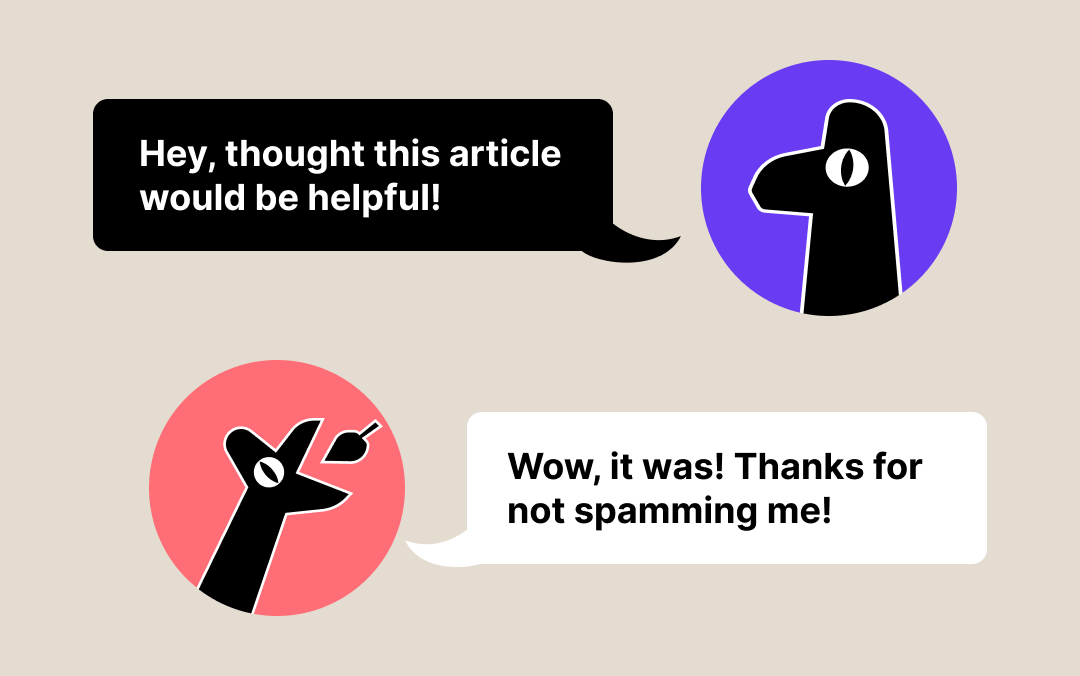
Tip #2: Leverage relationship capital before you go cold
by Dan Swift
Build your network.
Connect on LinkedIn with every single person, every single day, with whom you have a meaningful business or personal interaction. Then, before sending that cold email or LinkedIn message, take 5 minutes to scan your mutual connections (colleagues, former clients, partners, and even friends). Sales Navigator is still the most powerful tool available.
Identify people who know the buyer or potential influencers who can vouch for you. Leverage Generative AI to help map your value proposition, competitive differentiators, and customer proof points to an identified business need. Then, ask for a warm introduction using a short message template.
A warm intro doesn’t just boost your open and reply rates. It transfers trust. And in B2B sales, trust is the currency that accelerates conversations and improves Buyer Experience (BX) from the very first touchpoint.
How to Start Selling Warm:
1. Build & Tag Your Network. After every real interaction, connect on LinkedIn and mark them on a spreadsheet.
2. Find the Warmest Path In. Use Commsor or Sales Nav to identify mutual connections. Prioritize people who trust you and know your prospect, these are your best Connectors.
3. Make the Ask + Prep the Pitch. Ask for a quick intro with a short, clear message. Map your value to their need using GTN Plays. Tie in proof, timing, and differentiation. Then let trust do the talking.
Tip #3: Start conversations, not pitches
by Mark Goldberger
Instead of pitching buyers during your first conversation, look to start a conversation about their role, their perspective, their industry, or another relevant topic.
I receive at least a dozen cold emails per day from reps trying to sell me software I’ve never heard of and don’t believe I need. Of the messages that actually make it past my spam filters, I delete most from the headline or first sentence alone. If you don’t know me and you don’t know the big rocks I'm focused on, why should I respond to your formulaic cadence?
Think of cold outbound like dating; while it’s possible someone random can walk up to you, generically explain why you should immediately fall in love with them and forge a relationship that ends up in happily ever after, it’s maybe not the strongest first move. As in romance, expressing genuine interest (from your observations) and through the asking of questions (discovery) is the right way to go. Try interacting with the prospect’s content on LinkedIn / X. Show that you’ve listened to their podcast appearances or YouTube interviews, or read recent articles or reports on their company. Ask for a few minutes of their time (not an hour) so you can hear more about their thoughts on a topic they’re likely to want to talk about. This isn't about you and the product you're selling; it's about them. Listen more than you speak!
Through that initial call, you should gain insights into what's top of mind for them, and whether your product might solve some of their more pressing pains. If so, you've likely earned the right to talk about yourself and share more about the product you’re selling. Just make sure you’re able to relate it to the real business pain they’ve shared with you, not some theoretical pain you believe all businesses suffer from. The more you can tailor your approach, the more successful you will be!
Tip #4: Would you buy from you?
by Mollie Bodensteiner
Secret shop your own buying process regularly with this critical question: if you're not genuinely delighted by the experience, how could you possibly expect your customers to be? This uncomfortable truth reveals the gap between what businesses think they're delivering and what customers actually experience.
Become your own harshest critic. At least quarterly, navigate your entire sales funnel incognito from discovery to post-purchase. Use an unfamiliar device and create a new account. Document every moment that doesn't spark joy or creates friction. Rotate the team member accountable for this task to get new perspectives and insights.
When you hit a frustrating step, don't rationalize it with insider knowledge ("well, our system has limitations" or "customers understand this complexity"). If it annoys you with all your goodwill toward the company imagine how it affects someone with no emotional investment in your success.After completing your secret shopping experience, bring your findings to a cross-functional stakeholder meeting including representatives from sales, marketing, product, and customer success.
Present your unfiltered experience, highlighting both pain points and positive moments. Collectively develop a prioritized action plan with clear owners and timelines to address the friction points you discovered.
The most transformative companies create buying processes that would delight even their harshest critics. When your own experience as a secret shopper leaves you impressed and satisfied, you've created something truly remarkable. Anything less is a compromise that customers will sense, even if they never directly complain about it. The standard is simple: if it doesn't delight you, it won't delight them.
Tip #5: Sell outcomes, not features
by Nat Johnson
Customers don’t buy tools, they buy the results they expect those tools to deliver. Features alone won’t get you into strategic conversations. If you want to sell high and unlock budget, anchor every interaction around “Why” questions in the following three categories:
- Why change?
- Why now?
- Why us?
Using this framework from the very first call keeps the conversation focused on tangible business impact, not product demos or feature checklists.Selling features gets you stuck at the functional level. Selling outcomes gets you into decision rooms with execs who control the budget. If you’re not answering the Three Whys, you’re not selling to the people who can actually buy!

Tip #6: Buyers don’t need more AI...They need more you
by Hannah Ajikawo
Still “using” AI like it’s just another tool in your stack? That’s exactly why your buyers feel like they’re talking to a script.
AI isn’t meant to replace your thinking. It’s meant to free up your time so you can think more clearly about the buyer. When you treat AI like a partner (not a shortcut) you stop flooding buyers with generic outreach and start showing up with real insight, relevance, and empathy.
Let AI handle the research, surface the patterns, and prep the data. That way, you can spend your energy being present, personal, and helpful. That’s what makes the buying experience smoother, faster, and less frustrating.
So no, don’t stop using AI. But do stop letting it think for you. Because your buyers don’t need more automation. They need more attention.
Tip #7: Stay inquisitive. Ask the why.
by Ronal Karia
The best sellers I know aren’t just closing deals, they’re uncovering truth. They’re driven by a healthy kind of paranoia: always asking why.
- Why will this deal happen?
- Why might it fall apart?
- Why is this person acting differently today?
Asking “why” isn’t about second-guessing, it’s about staying ahead. It gives you context when things go quiet, clues when something feels off, and clarity when you're trying to move a deal forward.
Curiosity isn’t just a trait, it’s a tool. And it’s one of the most underrated skills in sales. Keep digging, even when things seem on track. The more you understand the why, the better prepared you are to navigate the what-ifs.
Tip #8: Make it easy for your champion to sell
by Isaiah Crossman
Buying decisions are made in a series of internal meetings that we are not a part of. So much of your success in a deal is a function of how EASY you've made it for your champion to sell the decision maker & their colleagues in those meetings.
One way I do that is by sending a simple email with key talking points they can use in those meetings:
Hey Bill,
Let me know how it goes with Jane tomorrow morning.
Figured I’d write out quick notes from some of the questions we discussed in our prep meeting earlier in case helpful for your convo:
Why are you recommending this project?
[Really succinct banger of a talking point, e.g., connected to their Exec Team Priorities]
[Really succinct banger of a talking point, e.g., about the excruciating pain they've been feeling]
Why can’t we do this on our own?
[Really succinct banger of a talking point, e.g., about your proprietary tech]
Have we considered alternatives? Why are you recommending this one?
[Really succinct banger of a talking point, e.g., about the reference calls they took]
What does success look like with this project? What’s the ROI?
[Really succinct banger of a talking point, you get the idea...]
Is it going to be a pain to implement? A pain to use on an ongoing basis?
[Really succinct banger of a talking point]
Let me know if this is helpful or anything else I can quickly send over before your meeting.
Isaiah
Tip #9: Focus less on the "more" and focus more on the "less"
by Joshua Roth
In sales, we often glorify hustle: More dials, more accounts, more pipeline. But more doesn’t always mean better. Especially for the buyer, more outreach = more noise. What they really want is a partner who understands them deeply, not another vendor chasing quota.
Less accounts mean you can go deeper with the ones you have driving more revenue. Focus less on closing the 5 small deals and focus more on closing that one big deal.
Deeper Discovery = Less Guesswork for the Buyer
You ask better questions. You recommend the right use cases. The buyer doesn’t have to explain their problems ten times and so they feel guided, not sold to.
Fewer Stakeholders = Less Confusion
Focusing on fewer, more strategic accounts allows you to align cross-functional stakeholders on both sides early. This eliminates bottlenecks later.
More Relevant Enablement = Less Friction
With fewer deals, you have the time to send hyper-relevant case studies, create custom ROI models, and even build out shared Slack or Notion spaces.
Better Forecasting = Less Surprises for Everyone
A tight focus gives both sides better visibility. The buyer knows what’s next, and you know what’s real. It’s not just better for the buyer, it’s smarter for you.
- Your win rate improves because you're not wasting time on bad fits.
- Your ACV grows because you're solving larger, more strategic problems.
- Your referrals multiply because strategic buyers often know others like them.
Tip #10: Transform discovery calls with the SCALE framework
by Chris Muldoon
The most frustrating part of buying? Vendors who don't understand your actual problems.
That's why we developed the SCALE framework. A discovery approach that puts buyers at the center and makes them feel genuinely understood. Here's how it works:
S - Seek: Start by painting a holistic picture of their world. Instead of jumping into product talk, I ask, "What are your priorities right now, and what are the biggest challenges you're facing?" This opens the conversation in a way that makes buyers feel valued.
C - Clarify: I always restate what I've heard: "If I'm understanding correctly, your biggest priority is X, but you're struggling with Y which is preventing progress." This simple step has dramatically reduced misalignment later in deals and psychology shows that getting prospects to verbally label their own problems creates a powerful commitment effect. When people make active, verbal commitments about their challenges, they're significantly more likely to take action to address those issues!
A - Ask: This is where magic happens. Dig deeper with questions like "What have you tried before?" and "Why do you think those attempts didn't work?" Buyers consistently tell us this helps them articulate problems they couldn't previously define.
L - Link: Only now do I introduce our solution by highlighting three specific pillars that directly address their unique challenges, using their language, not ours. I also take this opportunity to share actionable insights they can implement immediately, regardless of whether they choose to work with us. For example, "Based on what you've shared about challenge X, here's a quick tip that has helped our other clients make progress..." Providing unconditional value positions you as a trusted advisor, not just another vendor, it creates reciprocity and trust and demonstrates genuine expertise leaving most prospects obligated to engage further.
E - Engage: I share a relevant success story of how we've helped similar companies overcome comparable challenges.
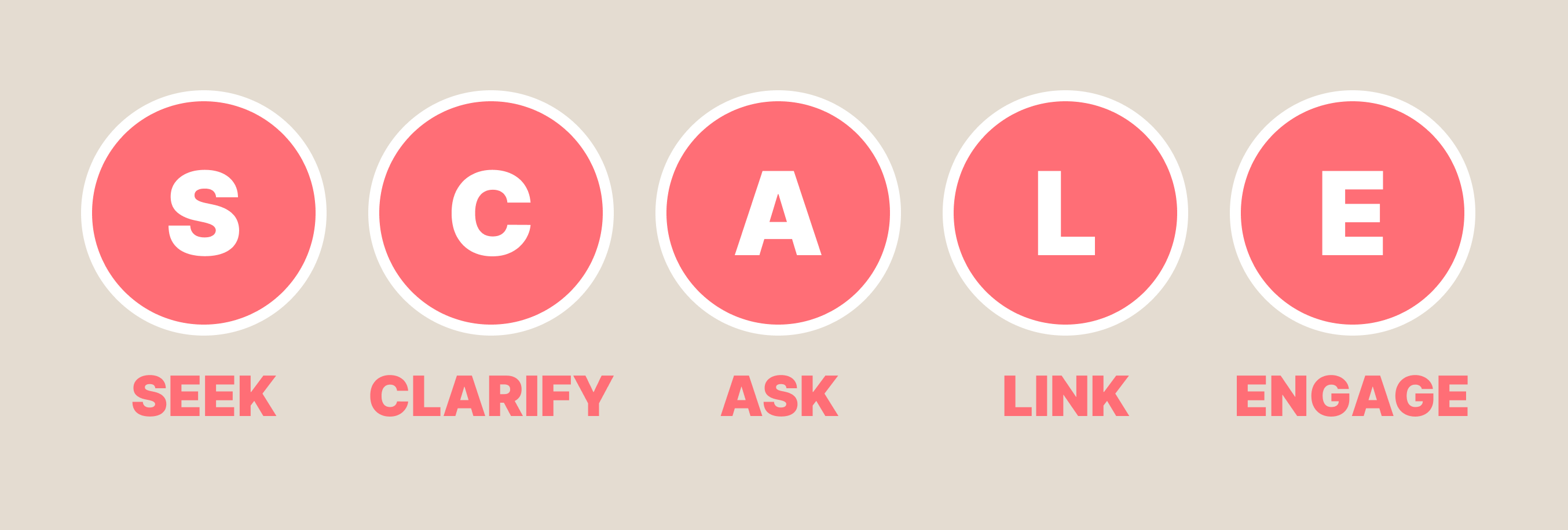
Tip #11: Deeply understand and align with buyer needs
by Lesley Ronaldson
You want to build trust, guide the buyer clearly toward a decision and remove friction. But most importantly…. Make the process easy!
Understand the Buyer Deeply
Know your key buyer personas and ensure your sellers are fully equipped to understand their challenges, goals and decision-making process. Recently in Gong, we held a fireside chat with our Head of Rev Ops (An important persona for us). Our sales team had a great opportunity to hear first hand how to sell to them, targeted questions that will open doors and how to uncover their needs and potential blockers.
Ensure the Solution Fits
As a seller you want to position yourself as a guide and not a closer. Outcome-based selling ensures we are shifting the focus from selling products to solving problems and achieving results that matter most to the customer. The key here is to focus on helping the buyer feel confident in their decision. Always solving for their needs and not selling.
Make the Process Easy
It's easy to forget that our buyers actually have day jobs and their time is really precious, especially when you go higher up the decision making tree. Try to reduce unnecessary steps in your sales process, skip those long meetings and powerpoints if they do not add value.
We use trumpet and our customers love the ease of use and having all the materials presented in one place. It also promotes a sense of accountability on both sides and helps move the deal along. Finally, this one may seem obvious but make your signature and payments process easy - Use e-signature tools, digital contracting platforms and in some cases flexible payment options!
Tip #12: Match your customer where they are. Don’t force them into your process.
by Jen Igartua
If a buyer shows up saying they’ve done the research and just want a quote… for the love of all that is holy, do not start BANTing them.
Your job as a seller is not to sell product. It's to help your prospect solve a problem. That’s it.
The best sellers know this. They dive into the buyer’s world, figure out what’s not working, and help them find a way forward.S
Sometimes that means educating them.
Sometimes it means helping them compare options.
Sometimes it means realizing your product isn’t the right fit.
But every time, it means showing up to solve.
Tip #13: The four rules to live by.
by Den Kozlov
- Reach buyers when they actually care. Contact-level signals > account-level garbage. stop guessing.
- Ditch the script, talk about their promotion. Seriously, ask what they need to achieve to level up, and intro them to a customer who’s already there.
- Talk to the whole buying group, not just your “in” and ask marketing for air-cover. Win rates double when you don’t try to go solo.
- Don’t force it. If they don’t need your stuff, don’t sell it. your revenue leader’s not gonna be thrilled when they churn in Q2.
Tip #14: Provide the right signals for your sellers and stop wasting precious buyer time
by Dave Wilkins
Just like your buyers aren’t short on offers in their inboxes, sellers aren’t short on tools, they’re drowning in them. Every new platform promises insights to make the buying process easier, but they mostly just add noise.
The result? Seller paralysis and annoyed buyers. Sellers end up spending more time trying to interpret dashboards than actually talking to relevant buyers, overcomplicating the buying process.
It’s time to flip the script.
To make the buying process easier, your tech stack should do the heavy lifting so your team can focus on selling to the RIGHT buyers. That means giving your sellers signals, not spreadsheets.
Tell them which accounts or people to go after, and why. Show them the compelling event that makes now the right time to engage. Highlight who you’ve worked with in the past and how it connects. All that data? It should be distilled, prioritized, and delivered in a way that’s actionable.
When sellers have the right signals, they get in front of the right people and stop wasting the time of their buyers.
Tip #15: Make it incredibly easy for potential buyers to connect with current users
by Laura Erdem
We live in a world where buyers are overwhelmed with options and overloaded with information. They’ve read the case studies. They’ve seen the decks. But nothing builds trust faster than hearing directly from someone who’s already walked the path.
That’s why one of the most powerful things you can do in a sales cycle is to make it incredibly easy for potential buyers to connect with your current customers. Don’t wait for them to ask, offer it upfront. Build customer advocates into your process. Have a short list of people who are happy to chat, and make those intros seamless.
These conversations give your buyer what no amount of marketing can: proof they can believe in. Real people. Real outcomes. And real confidence that they’re making the right choice.
How to Connect Buyers with Customers
• Create a group Slack channel
• Directly connect them over email
• Start a networking group and purposefully connect buyers and customers for “randomized” networking
• Co-host roundtables with your customers and invite buyers to join and ask questions on a regular basis
• Showcase a group of customers on your website willing to chat with buyers so buyers can reach out to them themselves without involving sales
• Host a small dinner and invite both customers and prospects to dine and connect meaningfully
Tip #16: The stakeholder map that sells for you
by Rory Sadley
You won’t always be in the room where the real buying decisions happen. But your champion will be.
So instead of crossing your fingers and hoping they represent you well… equip them.
Create a simple “What We’ve Heard” card. It’s essentially an external-facing stakeholder map, just way more human. It outlines:
- Who you’ve spoken to so far
- What they care about
- What their priorities are
This is not a pitch deck. It’s a buyer enablement tool.
When your champion shares it internally, new stakeholders get instantly up to speed. No backtracking, no confusion, no starting from zero.You’re not just making life easier for your buyer… you’re speeding up consensus, shortening the sales cycle, and showing that you listen.
Plus, it’s a great excuse to collaborate with your champion and get their feedback. You’re inviting them to co-create the pitch internally, which builds trust and buy-in.
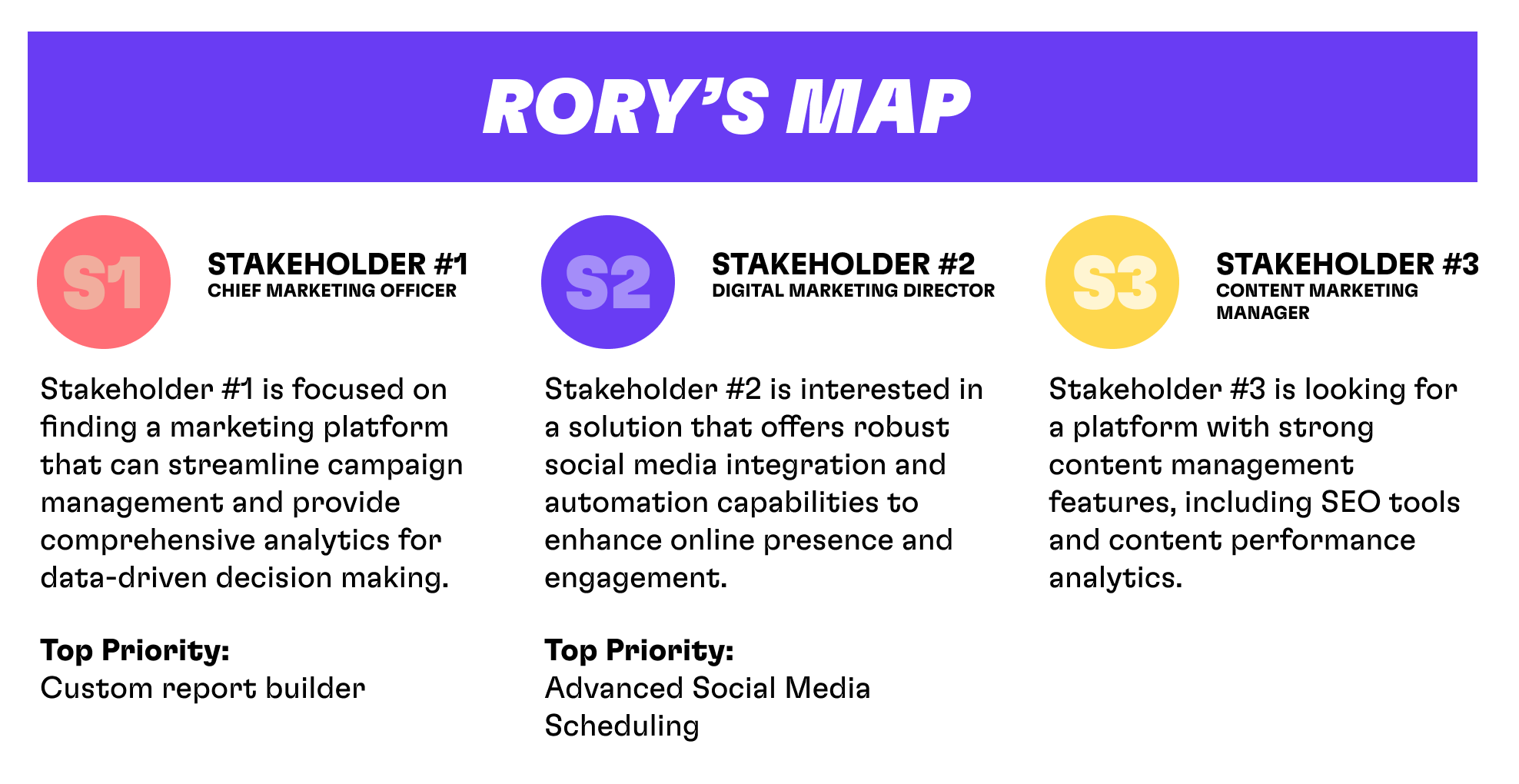
Tip #17: Create a buyer hub
by Dustin Joost
Spin up a “Buyer Hub” within 24 hours of discovery, even if they don't have a timeline to buy.
Whether you’re chasing a 14-day SMB win that gives you just two touches with a single decision-maker or steering an 11-person enterprise committee through months of checkpoints, your buyers share one frustration: digging through email chains and slide decks to justify budget. In fact, 77 % of B2B customers rated their last purchase “difficult or very complex.” Before you hit “send” on that follow-up email, launch a templated resource room (Trumpet, Dock, Seismic, Showpad) and give your champion a single, living link to circulate. Even if the deal isn’t ready to move to SQO today, the hub stays live as a single source of truth your prospect can revisit when timing aligns, so you resume momentum instead of rebuilding it from scratch.
How To Do It In 15 Minutes
Start with a template. Include four tiles: a 90-second intro video, a mutual action plan, three role-based value briefs (economic, technical, user), and a live pricing/proposal module.
Add “moment-based” proof. Embed the Gong recording, a 3-click interactive demo (Reprise, Storylane, Arcade, Demostack), and one case study that mirrors the buyer’s industry.
Assign the champion a micro-task. Close with: “When you add finance & security to the hub, tag me and I’ll record a 60-sec recap for them.” This both multi-threads and surfaces objections early.
Running this play has allowed us to see 25–35% faster cycle times and win back 24% of SQOs DQ'ed due to timing within 12 months. Remember to refresh the room every seven days to stay budget-cycle-relevant.
Tip #18: Make it easy for your buyers to say “Yes” to the next step
by Catherine Olivier
Your job isn’t to convince, it's to remove friction from the prospects first 'yes'.
In 2025, buyers are flooded with outreach. They ignore anything that feels vague, complicated, or pushy. The best sellers make responding feel effortless, clear, and low-risk.
Quick and easy ways to make it easier for buyers to say yes to the next step:
Simplify Yours Asks
- Propose a specific time instead of asking “when works for you?”
- Give two clear options (e.g., “Would it be helpful to do a quick 15-minute demo or send a tailored example via email?”)
- Use yes/no questions that are easy to respond to (“Would it help to see how another company in your space used this?”)
Reduce Friction
- Send a calendar link with pre-filled context.
- Include a one-click scheduling option (no back-and-forth).
- Pre-write the intro email they can forward to decision-makers.
- Attach the key materials (deck, pricing, case study) in advance, don’t make them ask.
Create Low Commitment Paths
- Offer a no-pressure option (e.g., “Happy to share this and you can decide if a conversation even makes sense.”)
- Frame the next step as learning, not buying (e.g., “Want to see how others are solving this?”)
- Make it feel like they’re in control (“Totally up to you, but happy to show what this could look like.”)
Tip #19: It’s all about building trust
by Marna Becker
To make the buying process easier for buyers, I try to take the same approach I’ve used in leadership—meeting every challenge with resilience, clarity, and care. I know that buyers are often dealing with constant change, internal pressures, and shifting priorities. Giving value and listening is going to be key to making it easier for buyers to buy from you, rather than from a competitor. Buyers are more likely to invest in those sellers they trust with those with whom they feel heard.
Just like when I guided my team through difficult transitions, when I am speaking to a prospective buyer, I aim to be steady, supportive, and solution-oriented. It’s not just about hitting performance goals, it’s about building trust. I believe that when buyers feel understood and supported, the process becomes smoother, more collaborative, and ultimately more successful for everyone involved.
How to Build Brand Credibility and Trust
People buy from people they trust
Fair or not, the old saying “it’s not what you know, it’s who you know” is often true, especially with enterprise deals. Buyers buy from people they trust, and its a hell of a lot easier to be trusted if you’re already known. Being known can come from your own connection with a buyer, or from leveraging a mutual connection through an investor, customer, executive, or partner.
Leverage trusted industry voices to build credibility, generate leads, and drive sales.
People trust people. When a respected industry expert vouches for your brand, it instantly elevates your reputation. That’s why 94% of B2B marketers say influencer marketing works. It helps cut through skepticism and positions your business as a trusted leader.
Network Social Proof
Quotes, case studies, and other forms of social proof are critical to helping close deals. In fact, as much as 80% of B2B buyers end up buying a product already used by someone they know and trust. But most sellers treat social proof as a passive thing, slipping a case study into a follow up email or only offering up a customer reference once the prospect asks for it.
You can leverage your network and be more proactive, surrounding your prospects with social proof before they even know to ask about it.
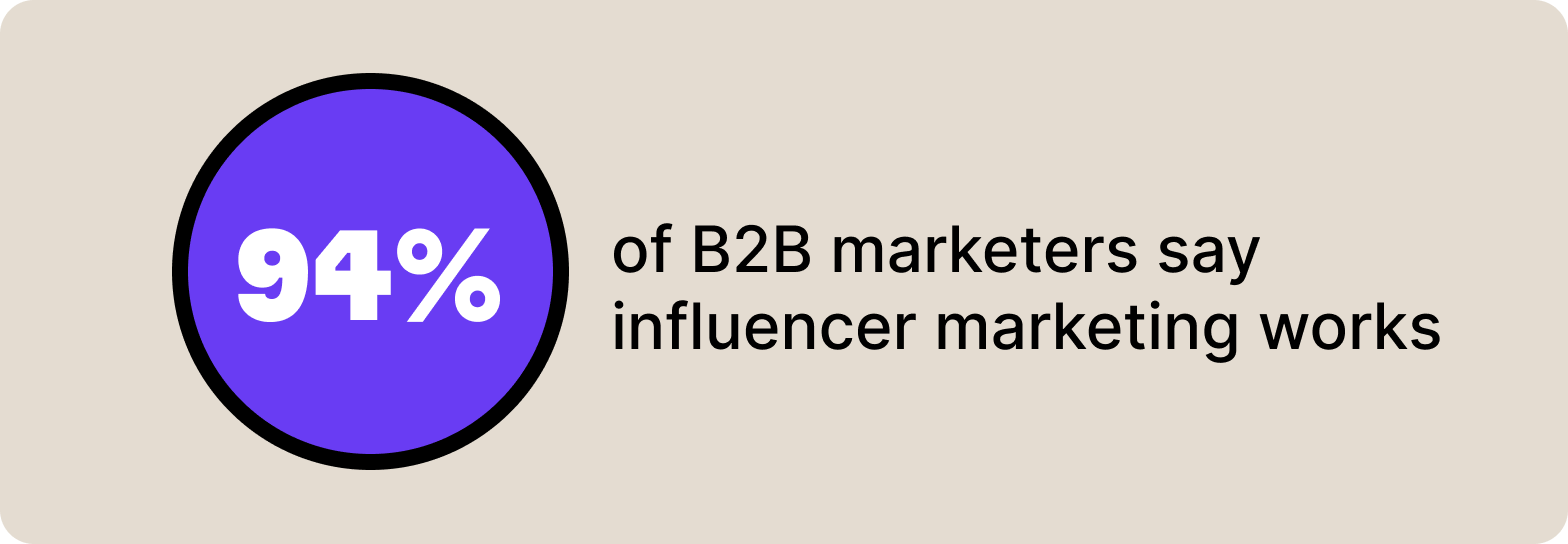
Tip #20: Work the org chart like a sales pro
by Lindsay Rios
If you're only talking to marketing when you need content or to product when there's a bug, you're missing the real opportunity:
Build real relationships across your own company.
- Grab coffee with your CS team. Learn how they handle customer friction and handoffs.
- Sit in on a product roadmap meeting. Understand what’s coming (and what’s not).
- Check in with finance or ops. Get a feel for the broader business priorities.
Selling isn’t a solo sport. Get curious, plug in, and turn your company into your team.
Tip #21: Leverage your product as the true secret weapon that it is
by Catie Ivey
Anyone that has been in sales as long as I have (or even close!) was likely taught to gatekeep your product. To not give away too much too soon.
That advice couldn't be more outdated than it is today.
Modern B2B buyers expect more from us, and it's up to us to deliver a more buyer-centric process, which includes getting your buyers access to your product earlier and more often.
At Walnut we talk about "Product-Led Everything" which just means that we believe that if you're in SaaS that your Product is your ultimate secret weapon.
It is (by far!) the most valuable asset that your company owns, and you should be leveraging it across your entire GTM motion - from your top of the funnel marketing efforts, earlier and more often in your sales process, and as customers move through their end to end customer journey.
Tip #22: Create a value-filled shared Slack channelafter the first discovery call
by Mac Reddin
Here's the funny part about this tip - we implemented it as sellers at Commsor after experiencing it done incredibly well as buyers.
It's common advice to try and get on a texting basis with prospects, a shared Slack channel makes it easy to share complex info, call follow ups, and next steps. But my favorite part is how much easier it makes multithreading.
Your champion can easily add anyone from their team into the call, giving them instant context and access to your team.
When creating the channel, consider including follow up information in a message before inviting your prospect. That way, when they join, the information they're looking for is already there, ready to go.
Mac's Checklist
- Create the channel
- Add a "Canvas" with all relevant information. Create a name for it, like "[Product] FAQ". Some information you might consider adding:
- Link to demo video
- Link to prior call recordings or notes
- Free trial information
- Send a message giving context when you add your prospect. Here's an example:
- Hey Katrine! Looping you in to our chat about [product]. I've included some information in the FAQ section linked above. Happy to answer any questions you have.
Tip #23: Focus on simplicity, trust, and partnership
by Heidi Solomon-Orlick
A great buying experience should feel effortless, valuable, and aligned with the greater vision of your client's organization. At the end of the day, a great buyer experience isn’t just about signing a new customer, but ensuring long-term strategic success for both parties.
Simplify the experience for your buyer.
- Use plain, jargon-free language, especially in contracts and proposals
- Map out the buying journey to visually show steps, milestones, and timelines
- Offer decision-making tools like checklists, ROI calculators, etc. or async buying resources like informational videos, demos, or PDFs buyers can share internally
- Give one point of contact to reduce confusion by consolidating communications
Trust and honesty are key.
- Let buyers speak directly with happy customers
- Show the faces behind your company, humans trust humans, not logos
- Over-communicate during silence and provide updates even when there's no movement
- Be clear about what won’t work, if the customer isn’t a fit or if you can’t do something they’re requesting, be honest and transparent to build respect
Act as a partner, not a vendor.
- Show how your values alignment in action whether through your product, DEI, or community initiatives
- Explain how your product supports their mission, not just operations
- Co-create solutions with them by bringing them into the building processAlign on KPIs and timelines to have defined shared success from the start
- Offer internal enablement through materials that help them sell it internally or by sitting in the physical room to help your champions pitch
- Invest in post-sale success by introducing the onboarding team early
Tip #24: Ask your buyers
by Chris Cicconi
Want a buyer-friendly sales process? Ask your buyers. It’s not something you can design in a vacuum.
Get in front of your prospects and customers—not to sell, but to interview them.
Understand their world: the challenges they face, the goals they’re working toward, and how they make decisions. When you speak their language and see things from their point of view, you build trust.
You stop being a salesperson pushing an agenda, and start being a partner working toward a shared outcome.
Tip #25: Remove friction when making deposits
by Leslie Venetz
Make it easier for buyer's to access the value you are trying to deliver.
Sharing a 67 page strategy report or 14 page white-paper isn't helpful as helpful as sellers think it is. By overwhelming their buyers with massive deposits, they are adding friction - asking the buyer to do time consuming work to uncover the value the seller thinks they've delivered.
Easy pivot - share an excerpt that you know they will find valuable or call out the specific page the most valuable insights is on to help your buyer quickly capture value. You can still share the full document but I prefer to share it in a P.S.
Ready to make buying easier for your buyers?
Commsor makes it easy to tap into your company’s network of employees, partners, investors, advisors and more to find warm paths to prospects, key stakeholders and decision makers.
You bring your network, Commsor will help you create warmer revenue.






